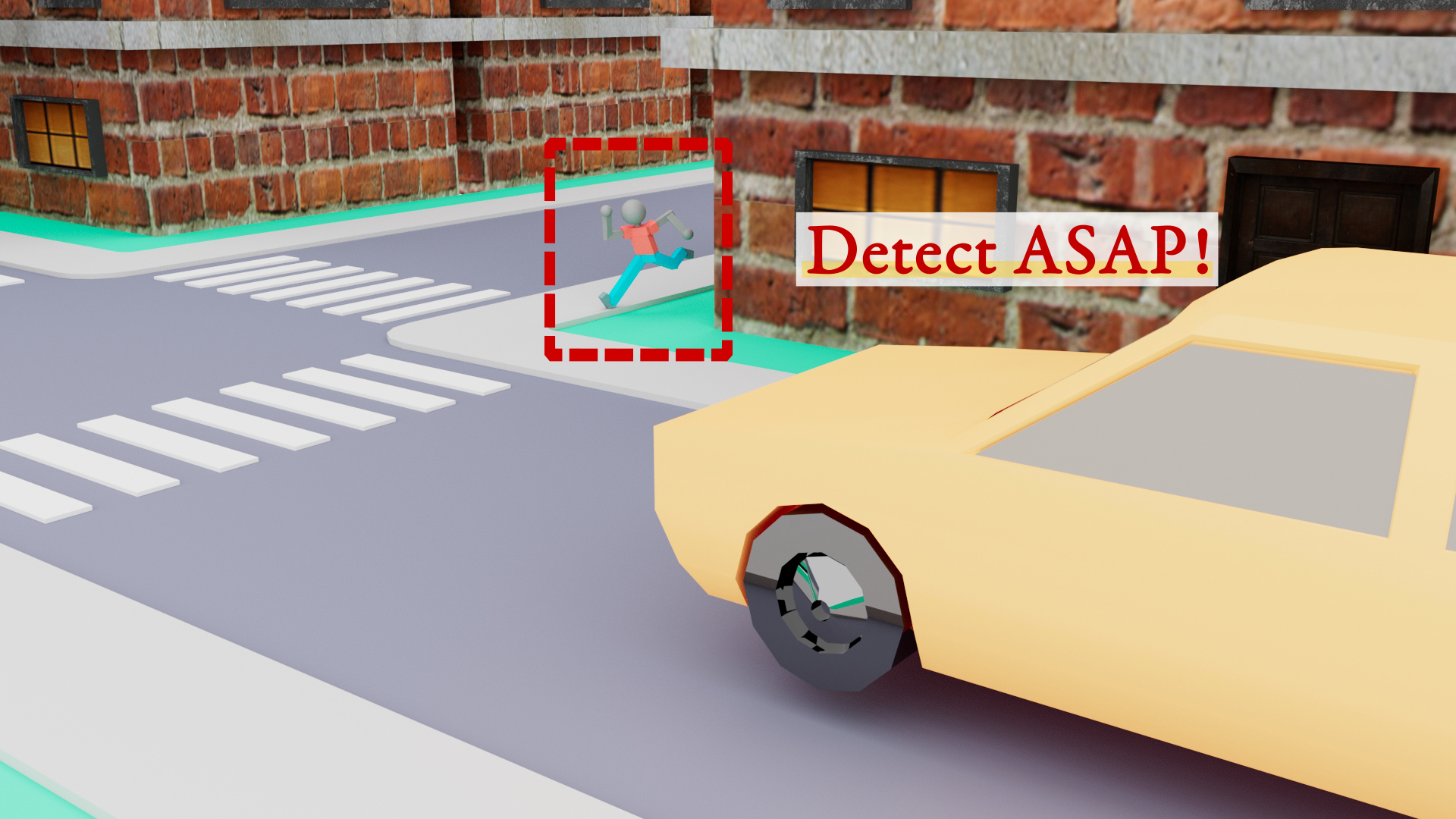High-Speed Recognition of Pedestrians out of Blind Spot with Pre-detection of Potentially Dangerous Regions

Abstract
We present a novel approach to detect pedestrians coming out of blind spots as early as possible. To reduce the delay after pedestrians appear, we perform pre-detection of potentially dangerous regions (blind spots) before arriving at the location. This pre-detection allows for a significant reduction in reaction time and improves detection accuracy for pedestrians by limiting the search region of the pedestrians. We used a monocular camera and developed an algorithm for detecting blind spots caused by obstacles blocking the driver's sight, based on the depth information obtained from a monocular depth estimation method. We evaluated the proposed method on a KITTI sequence of a complex street scene. The experiment demonstrated that the proposed method detected blind spots and the sudden appearance of pedestrians nicely, and the reaction time was significantly improved by the pre-detection.
How to detect blind spots?
We leverage depth maps to locate blind spots. A blind spot can be characterized by a distinct change in depth. We first search for the distinct depth change on both sides and identify potentially dangerous regions as a box around the edge where the depth change exists. As this method does not require super accurate depth estimation accuracy at the same level as LiDARs, a depth map can be obtained by a monocular depth estimation method, MonoDepth2 [C. Godard+, ICCV2019]. After the bind spots are located, they are predicted under a constant motion assumption in the subsequent frames.
Demo
Pedestrian detection was only performed in the blind spots. Notice that pedestrians were detected as soon as they appeared in the images even if only half of the bodies were visible.
YouTube
Citation
@inproceedings{zhou22bsd,
title={High-Speed Recognition of Pedestrians out of Blind Spot with Pre-detection of Potentially Dangerous Regions},
author={Jiacheng Zhou and Masahiro Hirano and Yuji Yamakawa},
booktitle={Proceedings of the IEEE International Conference on Intelligent Transportation Systems (ITSC)},
year={2022}
}